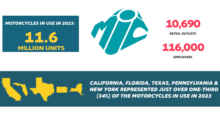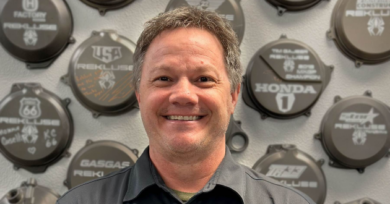The anatomy of an effective job description
 Good employee job descriptions can be a strategic, competitive advantage for your dealership. Bad job descriptions can cause internal turmoil and dealership disruption. Typically most of your staff wants to know how to contribute to the dealership and what is expected of them. They also want to how they are going to be evaluated while doing their jobs. Lastly, they want to know how they are going to get paid. The most widely spread tool to accomplish these tasks in a powersports dealership is the confusing job description.
Good employee job descriptions can be a strategic, competitive advantage for your dealership. Bad job descriptions can cause internal turmoil and dealership disruption. Typically most of your staff wants to know how to contribute to the dealership and what is expected of them. They also want to how they are going to be evaluated while doing their jobs. Lastly, they want to know how they are going to get paid. The most widely spread tool to accomplish these tasks in a powersports dealership is the confusing job description.
Some of you believe in job descriptions and write them well, keep them relevant to the employee’s job and use them properly. Some of you borrow them from another dealer, shove them down your employee’s throats, beat them with it and then wonder why the employee uses it against you.
When discussing this topic with dealers, I typically hear two attitudes toward the use of job descriptions. The typical dealer is either for them for many good reasons, or against them. Some dealers say that they do not use job descriptions because they can be used as a weapon against them.
The first attitude is that they are useful for measuring employee performance, employee recruiting, employee goal setting and employee training. Well-written job descriptions can communicate many things to help better manage and motivate your staff. Also well-written job descriptions can help you fight unemployment claims and other employee issues including litigation.
The second attitude towards job descriptions is that they are useless and can hurt the dealer. These dealers feel that job descriptions limit what the employee feels that they should be doing in their job. Some employees feel that if it’s not in their job description they shouldn’t be doing it or should be paid more for doing so.
Being a human resource expert I feel that job descriptions, if well devised and written, can help improve dealership operations and employee labor relations. All employees want to know what is expected of them and how they will be judged in performing their jobs. Job descriptions can be a strategic value in communicating to employees what is expected of them in their day-to-day lives at the dealership.
Creating a job description often results in a forward thinking thought process that helps determine how critical the role is within the dealership. And more importantly, a good job description will communicate how a particular job relates to other departments in the dealership. Also, a well-written job description will help you identify the characteristics needed by a new employee filling the role. By documenting the major roles of each job, you are better equipped to know what type of knowledge, skills and abilities are required to be successful in the job.
A bad job description can be disastrous. I have seen many a dealer come back from 20-goup meetings or OEM conventions with a whole set of cookie cutter job descriptions. They hand them out and say “Hey — this is your job — now go do it.” It is these types of dealers who hate job descriptions. It is these dealerships that become victims of their own job descriptions and end up not using them for their overall intended purpose. If you are looking for an easy “plug and chug” job description there is no such thing. Using another dealership’s job descriptions can and will be a bad experience for both the employee and the dealership.
Now using another dealer’s job descriptions can be a good idea if they are used as a “jumping off point” for developing a new job description specific to the job at your dealership. A parts manager at one store may have different knowledge, skills and abilities than you may require of your parts manager. It is imperative to make the development of a job description a shared effort. Make sure you involve the person actually doing the job to provide input into its development. By doing so you get better buy in from the employee because they were involved in its creation and are more vested in it.
A job description typically outlines the necessary skills, training and education needed by a potential employee. It will spell out duties and responsibilities of the job. Once a job description is prepared, it can serve a basis for interviewing candidates, orienting a new employee and evaluation of job performance. Using job descriptions is part of good management.
The anatomy of a good job description
- A summary statement of the job. These one or two sentences include a general overall statement of the duties required for the position at your dealership.
- Functions of the position. Usually this section is the most involved. It provides all of the details of the job and what the employee is actually going to do. It should include any management functions in addition to being as specific as possible describing the tasks the employee will face every day. This is also a good place to prioritize tasks.
- Attributes required for the job. If the job requires use of specific software spell it out here. Also detail any technical or educational requirements that may be critical for success at your dealership. This is also the section to provide insight into the type of work environment that is present in your dealership and that you are attempting to maintain. Is it pure business or must the person be able to contribute to the overall culture of the dealership? If so, this is the section for those types of job requirements.
- Reporting. Provide the details on whom the employee will be reporting to directly and how the dealership is structured. This will help your new employee better understand how their job fits into the totality of the dealership.
- Evaluation criteria. The more specific you can get the better off you will be. Writing this section will enable you to define what is most important for the dealership as well as the employee. Try to make sure the evaluation criteria of the position will promote the type of activities to enhance the success of the dealership. Also provide details on when evaluations will take place.
- Compensation. Including a range instead of a specific figure will give you more flexibility, but most employees will feel they should be at the top of the range. It is usually better to have a specific dollar amount, especially if you are giving the job description to the employee.
In closing, using job descriptions will help a dealership better understand the experience and skill base needed to enhance the success of the dealership. They help in the recruitment, selection, evaluation and potentially termination of employees. All too often, there is a misunderstanding of what a position entails and a well-prepared job description can help both sides share a common understanding. After all, the most expensive business decision today is selecting the right team members.
Forrest Flinn, MBA, PHR, SMS has been in the motorcycle industry for nearly 20 years and has been a true student and leader serving in various capacities. He previously worked as an implementation consultant for Lightspeed and as a general manager with P&L responsibility for a large metro multi-line dealership. Currently Forrest is the managing partner and chief visionary for a consulting firm that specializes in outsourced accounting, human resources, social media strategy, dealership operations consulting and Lightspeed/EVO training.
Contact: forrest@powersportsmc.com








